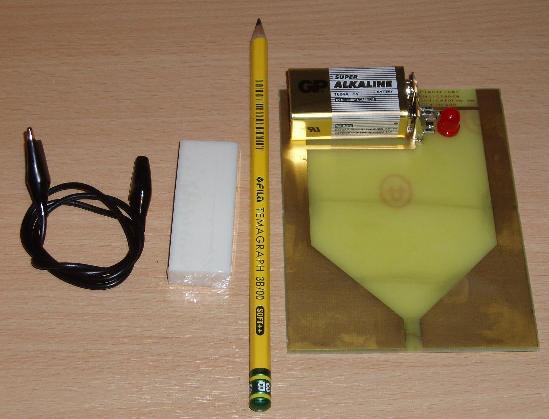|

History
My neighbour teaches primary science. Last year, he came round and talked to me about the problem he had had with unit 6G of the science curriculum. He had tried the recommended method using different lengths of wire, batteries and bulbs to see how the length and area of a conductor affects the resistance of a wire. For ordinary components, this simply doesn't work. You either need to use special resistance wire or you need high power bulbs such as car headlights. Ordinary wire is so low in resistance that, unless you use very long lengths, the resistance change is not visible.
We had an interesting session and I gave him some pieces of antistatic foam and some LEDs with protective resistors built-in. The resistance of the foam is high enough to work with reasonable-sized pieces and can be cut into shapes for testing. Unfortunately it doesn't wear well. He reported later that these worked fine and that the children had noticed that they themselves conducted enough electricity to light the LEDs dimly. The high point was several children connecting themselves in series and passing the current to illuminate the bulb.
We had tried experiments using pencil leads as the conductors but these failed as the resistance was too high. I spoke about the experiments with another friend who teaches electronics and week or so later he gave me a 7B pencil with instructions to try that. At that stage I decided to put all the elements together and invented the first ERIC.
We spent a considerable time trying to find a suitable name. ERIC is the best we could come up with; sorry.


